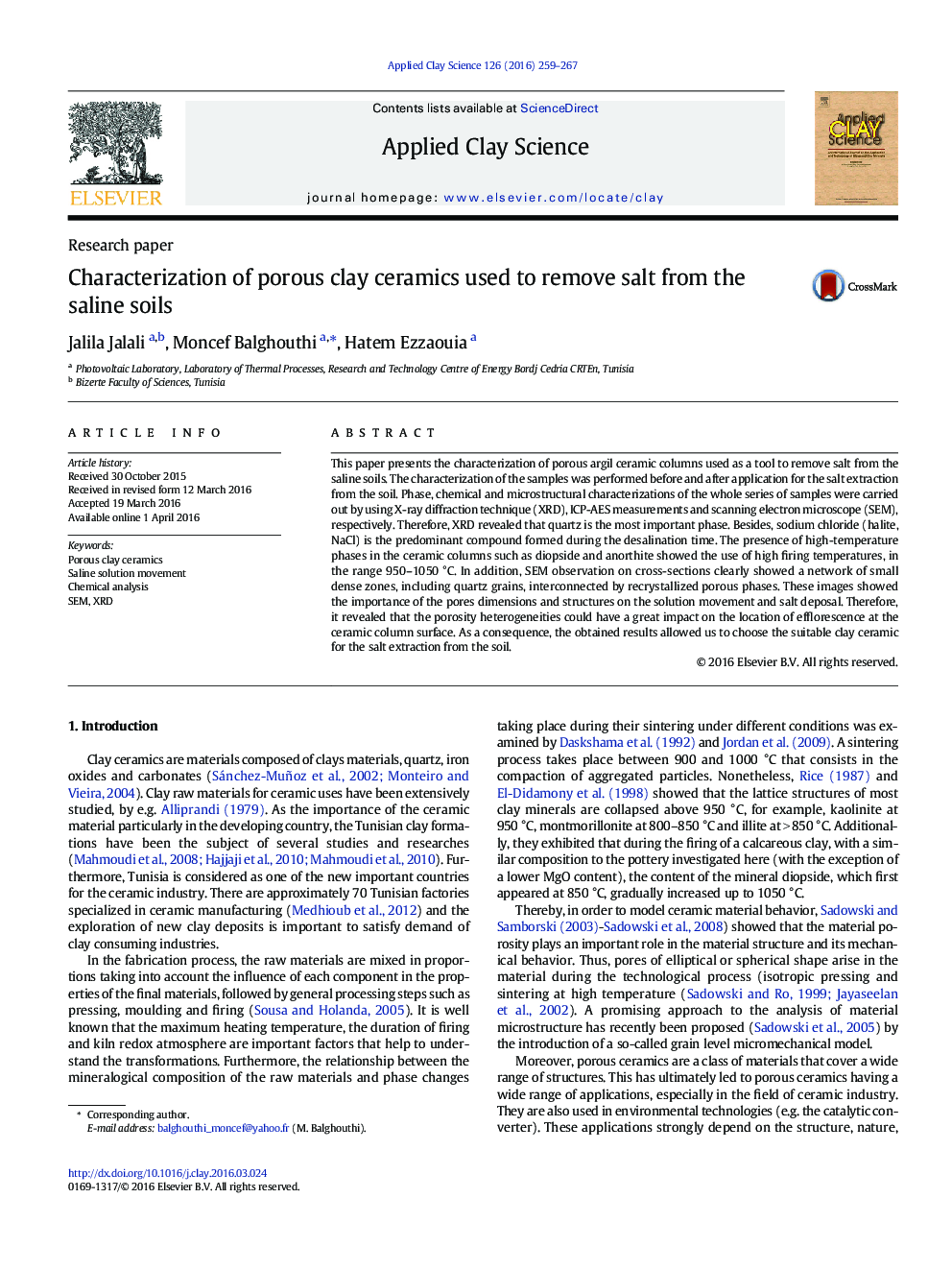| Article ID | Journal | Published Year | Pages | File Type |
|---|---|---|---|---|
| 1694065 | Applied Clay Science | 2016 | 9 Pages |
•Salt removal from soil using porous argil ceramic•Characterizations of porous argil ceramic columns used as a tool to remove salt from the saline soils•Impact of the ceramic column microstructure on the solution movement and salt deposal.•Ionic salt interaction, germination and deposal on the top surface of the porous argil ceramic•Determination of the clay nature, appropriate range of firing temperature of the ceramic shreds
This paper presents the characterization of porous argil ceramic columns used as a tool to remove salt from the saline soils. The characterization of the samples was performed before and after application for the salt extraction from the soil. Phase, chemical and microstructural characterizations of the whole series of samples were carried out by using X-ray diffraction technique (XRD), ICP-AES measurements and scanning electron microscope (SEM), respectively. Therefore, XRD revealed that quartz is the most important phase. Besides, sodium chloride (halite, NaCl) is the predominant compound formed during the desalination time. The presence of high-temperature phases in the ceramic columns such as diopside and anorthite showed the use of high firing temperatures, in the range 950–1050 °C. In addition, SEM observation on cross-sections clearly showed a network of small dense zones, including quartz grains, interconnected by recrystallized porous phases. These images showed the importance of the pores dimensions and structures on the solution movement and salt deposal. Therefore, it revealed that the porosity heterogeneities could have a great impact on the location of efflorescence at the ceramic column surface. As a consequence, the obtained results allowed us to choose the suitable clay ceramic for the salt extraction from the soil.
